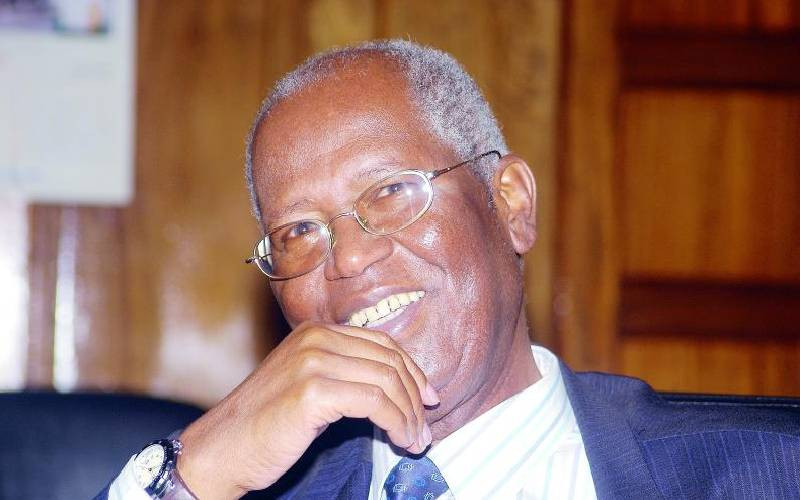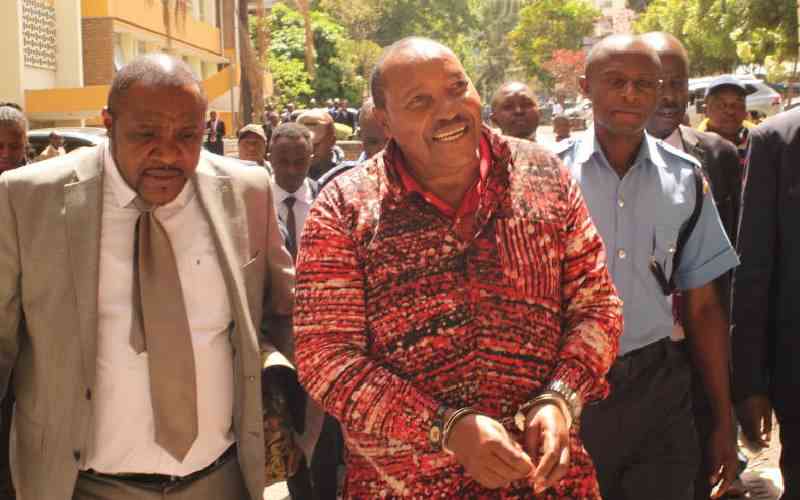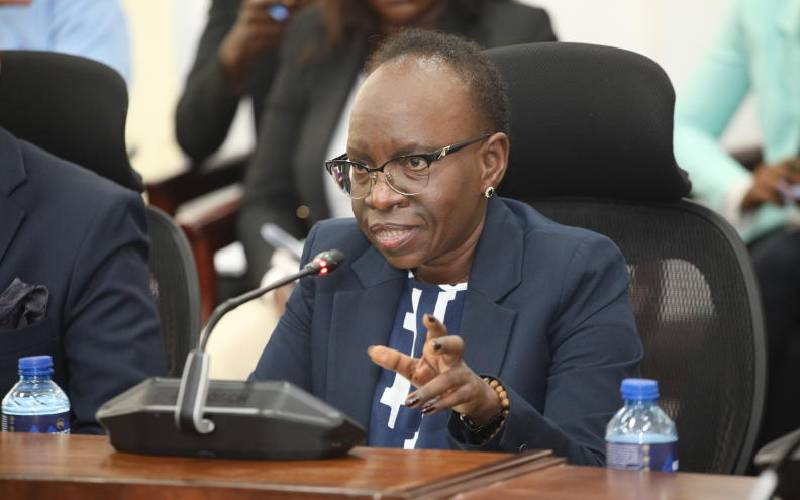By Emmanuel Were and Jevans Nyabiage
Kenya: The UK-based Robinow brothers will be in town this week.
The two own 57 per cent of Nairobi Securities Exchange-listed Rea Vipingo, the largest sisal producer in Africa, and want to buy out the other shareholders.
Plantation farming is a rather dull, monotonous and repetitive form of agribusiness, and it is growing at a slow clip. It is a dinosaur in today’s age of quick returns and mobile phone app innovations that are revolutionalising agriculture.
But the Robinow Brothers — Richard and Jeremy — want to keep to their old habits and continue with sisal production.
This week, as they are taken around to analysts, the media and other investors, the question that will be shoved at them most is what in the world they plan to do with all those acres of land they are sitting on.
Rea Vipingo occupies about 70,000 acres in Kenya and Tanzania. In the coming weeks, the sisal producer, like a number of other listed firms that sit on vast tracts of land while their businesses show little growth, is set for a major fight with its shareholders.
Deadline
Last week Friday, the Capital Markets Authority deadline for bids for Rea Vipingo lapsed. The February 28 date allowed the Robinow brothers, Centum Investment Group and Vania Investment Pool Limited, who had earlier made their bids for the sisal producer, to put new offers on the table.
Rea Vipingo’s shares were trading at Sh27.50 when they were suspended from the bourse in November last year.
The Robinow Brothers had offered Sh40 per share, which translates to Sh2.4 billion for the sisal producer; investment firm Centum offered Sh50 per share, valuing the firm at Sh3 billion; and insurance agency tycoon, Mr Dilesh Bid, offered Sh55 per share, valuing it at Sh3.3 billion.
Indications are that the three bidders will stick to the price they offered, though this does not rule out surprises.
All three bidders, though, fall short of the price tag investment bankers have put on Rea Vipingo.
Taking into account the 69,448 acres Rea Vipingo sits on, AIB Capital values the sisal producer at Sh10.12 billion.
This translates to Sh168.72 per share, three times what the highest bidder — Vania Investment — has offered to pay shareholders.
Stay informed. Subscribe to our newsletter
Rea Vipingo is not the only listed firm with this huge mismatch between the value of the land it sits on and the value of its shares trading at the NSE.
And its impending buyout is set to reignite debate on the emotive issue of whether many of these listed companies — especially agricultural ones — are better off moving away from their core business and putting their land to more productive use.
Watershed moment
This debate on how well agricultural companies, or other firms, utilise their assets, especially land, pops up every other year. But this time around, three events expected in the coming weeks will mark a watershed in the issue.
First, is the Rea Vipingo takeover.
AIB Capital’s value of Sh10.12 billion makes Rea Vipingo’s land worth six times more than its market capitalisation — which refers to the value of the sisal producer’s shares trading at the stock market — when it was suspended. The company’s market capitalisation was Sh1.65 billion in mid-November.
“The company owns approximately 69,448 acres and undoubtedly passes the test to being a land-rich company,” said AIB Capital in their research report titled Wake Up and Smell the Sisal that was published in December.
The analysts calculated the actual value of Rea Vipingo’s land in Kenya and Tanzania at Sh15.46 billion. However, they then deducted Sh4.64 billion, which is 30 per cent of this value, as an illiquidity discount.
The illiquidity discount recognises the fact that, unlike shares in a listed company, for example, a land owner cannot just wake up and in a week sell off land and convert the asset into cash. There has to be a process followed before a land sale is concluded, and this could take several months.
The analysts also deducted Sh702 million to cover some of the debts Rea Vipingo has.
The land issue — an asset many shareholders see as a ticket to quick returns — would not be such a big deal if the sisal producer’s business was growing.
But Rea Vipingo’s growth seems to have hit a plateau.
The revenues for the year ended September 2013 were at Sh2.57 billion, the same as the previous year.
Although net profits grew by 16 per cent to Sh442 million last year, these were not cash profits. What helped the sisal producer was the fact that the value of its sisal crop was higher in 2013 than in the previous year.
This is something that most agricultural companies capture as biological assets.
Sisal prospects
In 2013, Rea Vipingo’s net gains in biological assets stood at Sh228 million from Sh87 million in 2012.
“Although the profit before tax for 2012/13 appears greater than that of 2011/12, that is entirely due to a higher gain on the valuation of biological assets. I must caution members that this so-called gain does not represent a cash profit,” Mr Oliver Fowler, Rea Vipingo’s chairman, wrote in his statement in the firm’s 2013 annual report.
The Robinow brothers — whose stake in Rea Vipingo is held through their firm Rea Trading — probably see the long-term prospects of sisal, which is what might inform their decision to stick to plantation farming if they buy out other shareholders.
“Our decision to steadfastly remain in sisal farming is further reinforced by our confidence in the Kenyan economy, its robust agriculture sector and its people,” said Mr Richard Robinow in a statement sent to newsrooms in December last year.
The second event in this land circus among listed firms is Kakuzi’s announcement of its full year 2013 results, which are due any time now but had not been released by the time of going to press.
The listed agricultural firm cautioned investors in November last year that the profits for the year ended December 2013 would be 25 per cent lower than the previous year.
In a cautionary statement filed at the NSE, Mr William Tarplee, Kakuzi’s chairman, noted that: “this anticipated drop in full year earnings is, in part, as a result of downward pricing pressure of our green leaf in the tea operation, mainly as a result of the decrease in the Kenyan Black Tea prices this year, and our avocado crop volumes being significantly lower than the previous year”.
The listed agricultural firm is engaged in a wide range of products, from tea and avocados to forestry, pineapple, macadamia and cattle rearing.
Kakuzi’s profits have been falling since 2011. In that year, the firm made Sh644 million in net profits.
The following year, 2012, profits dropped to Sh408 million.
1n 2013, the profits are set to be lower by at least 25 per cent, which means Kakuzi is expected to report about Sh306 million in net profits.
The firm sits on 7,482 acres, with 80 per cent of this land in Makuyu near Thika, and the remaining acreage in Nandi Hills, Rift Valley.
At the end of 2012, the value of the firm’s buildings, freehold land and dams was reported at Sh923 million, before accounting for deprecation, according to figures in Kakuzi’s annual report for 2012.
This means that on average, Kakuzi values an acre of land — plus the buildings on it — at about Sh123,400.
This appears a gross undervaluation given the fact that land near the industrial town of Thika has risen in value with the completion of the Nairobi-Thika Highway to upwards of Sh10 million per acre.
Analysts say most agricultural firms prefer to put a conservative estimate on their land.
“Even they [agricultural firms] are very clever. They are very conservative in the valuation of land because they do not want attention drawn to it. The valuations are not done regularly. If they were to put the existing market value of the land, the balance sheet would swell,” said an analyst who requested not to be named.
“The problems with land come up only when there is a potential takeover or a disposal of the assets.”
Real estate
Kakuzi was caught up in a storm when it sold one of its tea estates, Siret Tea Company, to EPK Outgrowers, a company associated with its directors. The sale started in 2007 and was completed in 2012, raising Sh385 million.
If the agricultural company let go of one of its tea estates, many have wondered, why would it not sell part of its land to put up real estate or put it to more productive use?
But the directors of Kakuzi have remained steadfast in their quest to stay in agriculture and not to venture into real estate despite the asset class having high returns.
This can be explained by the fact that Kenya has a growing population and is yet to produce enough to feed its people. This means that agriculture done on a commercial scale could attract good returns because the companies will benefit from economies of scale.
“Being a highly topical and emotive issue, and forming part of Kenya’s new Constitution, it is important to emphasise Kakuzi’s wholehearted commitment towards the full realisation of its agricultural potential in the interest of all the shareholders,” said Mr Tarplee.
Another firm that exemplifies the dilemma facing agricultural firms with large tracts of land is Eaagads, an NSE-listed coffee grower.
In October 2009, Renaissance Capital, the Russian investment bank, bought about 300 acres of land after acquiring a 62 per cent stake in Eaagads.
Renaissance Capital and three local investors — former Central Bank of Kenya governor Nahashon Nyaga, Vimal Shah of Bidco Oil and Steve Mwagiru — are putting up Tatu City, billed as the country’s largest real estate project.
The project is envisioned to involve the construction of a new city of 62,000 residents who will live in a well-planned environment of manicured homes, office blocks, shopping malls and industrial parks on 1,000 hectares (2,471 acres) in Kiambu County, behind Kenyatta University.
Despite the attraction of the huge chunk of land that Eaagads offers, the firm’s earning per share, or EPS, stands at negative 1.84. The stock last week was trading at an average of Sh25.50, an 8.11 per cent drop from the previous week. This saw the company’s market capitalisation drop by Sh72.36 million to stand at Sh820 million on Friday.
The third issue in the land debate is the dust beginning to settle on President Uhuru Kenyatta’s appointment of Mr Bill Lay as chairman of East Africa Portland Cement. This follows the High Court upholding the President’s decision to sack former chairman Mark Ole Karbolo.
Portland has been embroiled in a long and bruising shareholders’ war centred mainly around the Government’s determination to have a new team shepherd the cement firm — a move that has proved difficult with French firm Lafarge’s upper hand on the board.
Now the focus of attention will be on how Portland has lost market share to younger firms Bamburi and Athi River Mining.
Portland sits on about 14,000 acres of land, which the market values at about Sh3 million an acre.
This means Portland sits on a value of Sh42 billion, which is seven times the value of its shares trading at the NSE. Portland’s market capitalisation is Sh6.6 billion, which pales in comparison to Bamburi’s Sh75 billion and ARM’s Sh43 billion as of last week.
Selling off shares
Spending Sh6.6 billion to buy all Portland shares at the NSE and then selling off its assets, such as land, might make an investor more money that simply buying into the firm. The only problem with this is that the Government and Lafarge hold about 90 per cent of Portland’s shares.
Although the cement manufacturer reported a net profit of Sh1.77 billion in its financial year ended June 2013, compared to a Sh972 million loss in 2012, most of its profits were thanks to an accounting function.
About half of Portland’s profit before tax was because its property revaluation (Sh730.0 million) boosted bottom line performance:
“EA Portland has a long-term lease on several thousand acres of land adjacent to the plant in Athi River. The area has seen several housing projects come up, making the land prime. The last revaluation of the land was carried out in FY09, thus the jump in gains in investment properties,” said Kestrel Capital analysts in a research report.
Kestrel analysts remained optimistic of Portland’s fortunes.
“Despite missing our forecasts on revenue and operating profit, we are encouraged by the improvement in performance and are confident about the company’s prospects going forward. We, therefore, maintain our BUY recommendation.”
The challenge for Mr Lay and Portland CEO Kepha Tande will be to prove, and ensure, the cement maker fully utilises its resources, especially land.
[email protected]
 The Standard Group Plc is a
multi-media organization with investments in media platforms spanning newspaper
print operations, television, radio broadcasting, digital and online services. The
Standard Group is recognized as a leading multi-media house in Kenya with a key
influence in matters of national and international interest.
The Standard Group Plc is a
multi-media organization with investments in media platforms spanning newspaper
print operations, television, radio broadcasting, digital and online services. The
Standard Group is recognized as a leading multi-media house in Kenya with a key
influence in matters of national and international interest.
 The Standard Group Plc is a
multi-media organization with investments in media platforms spanning newspaper
print operations, television, radio broadcasting, digital and online services. The
Standard Group is recognized as a leading multi-media house in Kenya with a key
influence in matters of national and international interest.
The Standard Group Plc is a
multi-media organization with investments in media platforms spanning newspaper
print operations, television, radio broadcasting, digital and online services. The
Standard Group is recognized as a leading multi-media house in Kenya with a key
influence in matters of national and international interest.










